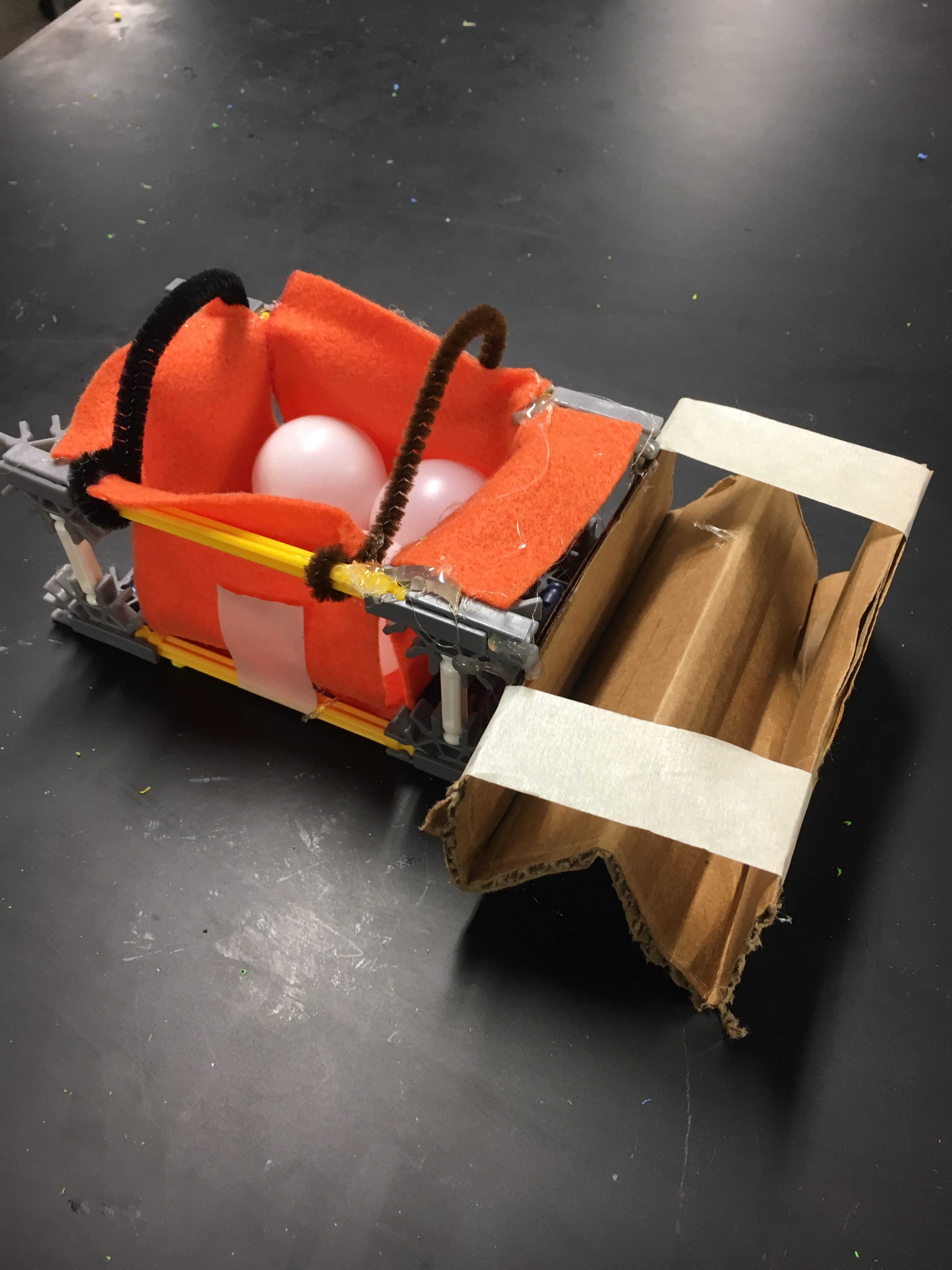The students have had a very interesting second week that started last Friday when they used Pugh Scoring Matrices to select the best Okapi enrichment idea from their brainstormed solutions. This process took the teams an entire afternoon, with me walking around and checking up on the team throughout that time. The teams selected some really interesting ideas and I looked forward to Monday when they would start building them.
Monday was great because I got to play the role of lab assistant a bit, as well as being a TA. During the school year I work as a lab assistant part time in the OEDK, so helping teams prototype is something I know much more about. By then end of the day Monday, and with a little extra time on Tuesday, the teams had created great medium fidelity models of their selected solutions.
Also on Monday we took some time to have a fun prototyping challenge at the start of the day run by Dr. Wettergreen. He has done this challenge with several groups, but he calls it the Bajaj challenge. Teams needed to design and build a “cart” that could safely carry two ping-pong balls down a zip-line. The fastest time would win, and I won. My cart, pictured below, beat all of the other teams with it’s time of 4.13 seconds down the zip-line. The primary feature was a spring made of cardboard on the front to cushion the collision with the wall at the end of the zip-line. The interns will argue that I “cheated” by putting chapstick on my slider to reduce friction. Did I do that? Yes. Was it cheating? Debatable. The other teams had some great carts; I especially liked Manuel and Luis’ with its sculpted play-doh seats.
My winning Bajaj challenge cart
On Tuesday we finished up bootcamp and the teams gave presentations on their zoo projects after just five days of working on them. Bootcamp is a fairly difficult five days, especially for the students who have not taken ENGI 120 already, but I think the interns did a great job with it and got a lot out of it.
Wednesday the interns were able to rank their preferences for the main summer long projects, and then we selected the groups based on their preferences. The four projects are:
- Wheelchair transfer device
- Casting Stand
- Diabetic Foot Inspector
- Oxygen Calibrator
The teams set to work right away doing research and preparing to meet with their clients. Last week I contacted all of the clients, before we had even decided the team members, and set-up meetings for all four teams within the first two days of beginning work. All of the teams wrote out questions for their clients and prepared a list of things they hoped to learn from the meetings.
Thursday we had a very special worksop prepared for the interns in the afternoon. We stopped all project work and Dr. Ghosn from the Bio-Engineering Department at Rice gave a presentation on Needs Finding – step 0 of the Engineering design process. After a very helpful lecture on the topic, the students were split into three groups to try a variety of activities that would give them a better understanding of the various needs of people with disabilities. Students used wheelchairs to navigate the OEDK and ramp outside, used blindfolds and canes to experience vision loss, and we used bandages to simulate eating with arthrogryposis. I tried to take photos of all the students as they did this, and there should be some funny videos of all the students in their own blogs.
Next week, the teams will keep working on their primary projects, which they will continue to do for the remainder of the summer. On either Tuesday or Wednesday, I will have a workshop for the students on 3D printing and SolidWorks that I hope will help them with their projects for the summer.


Boi